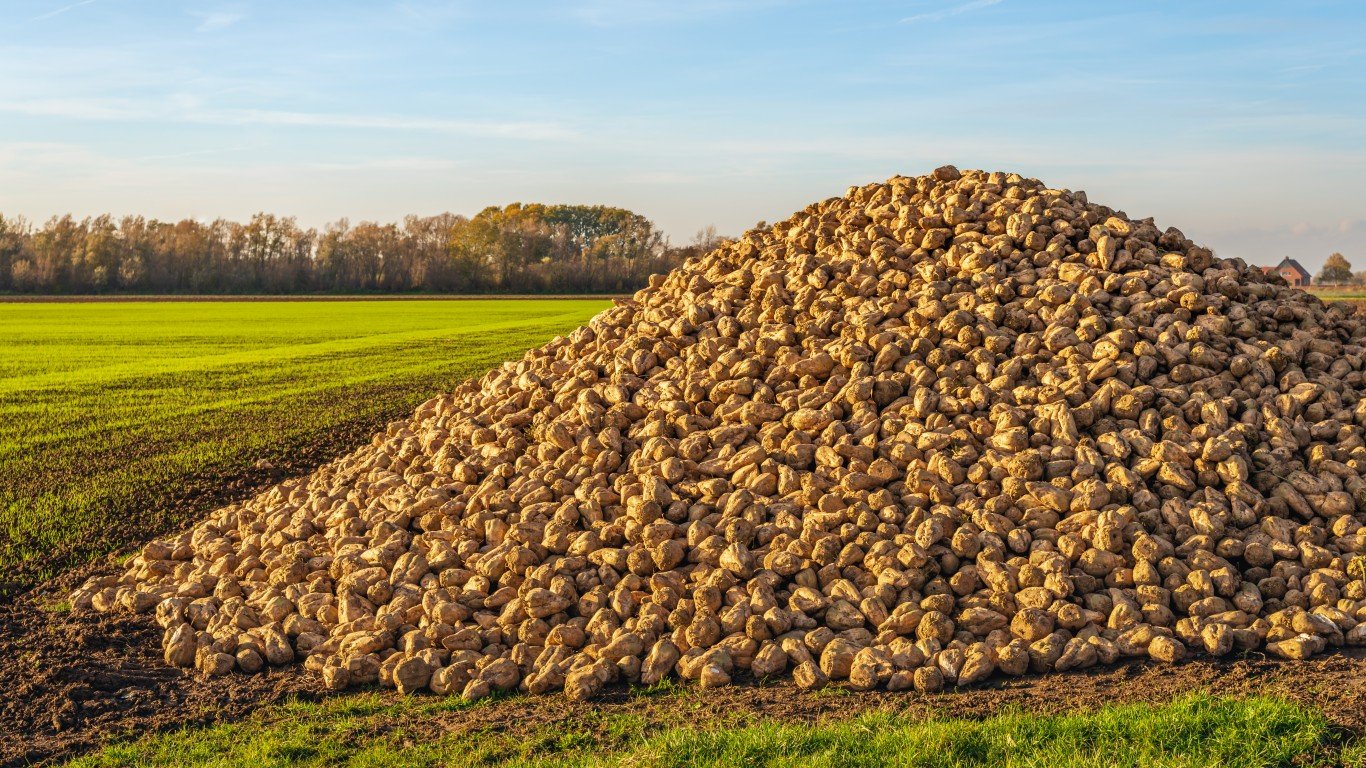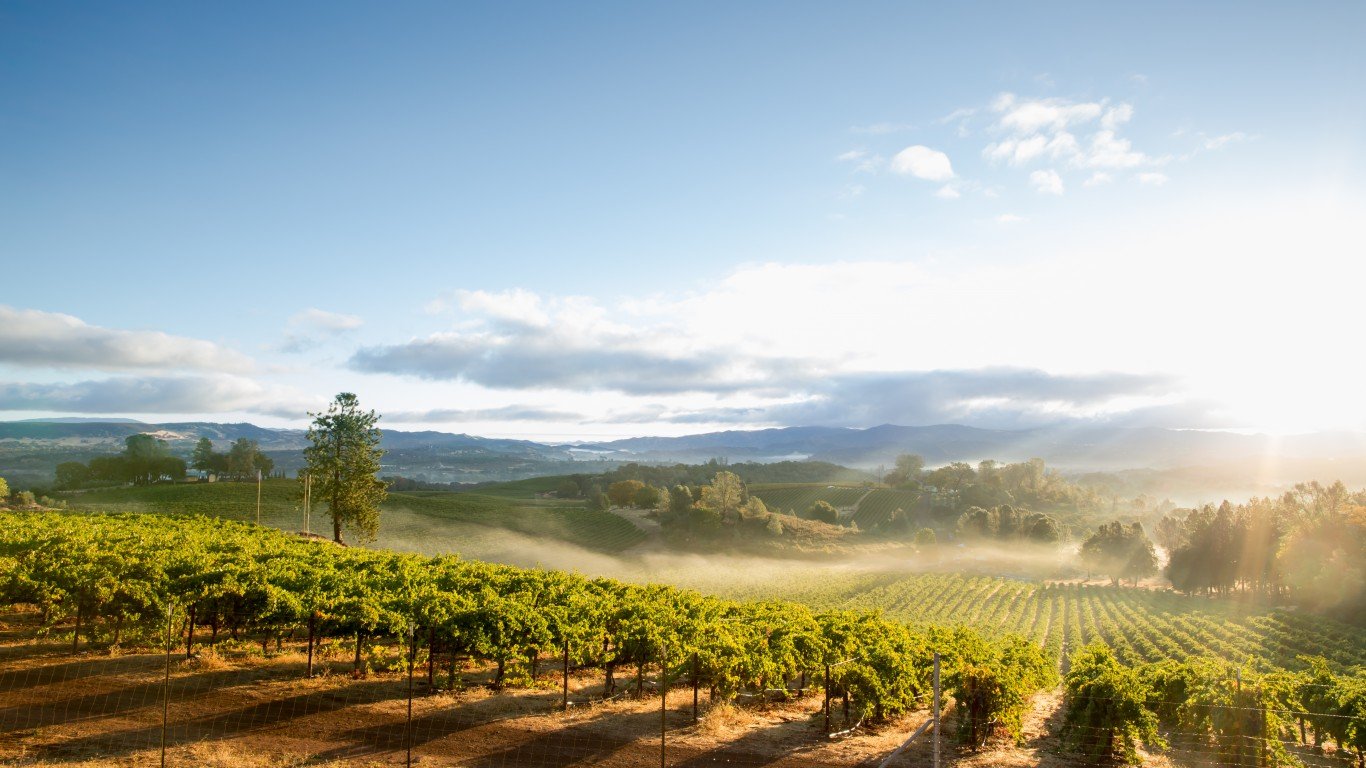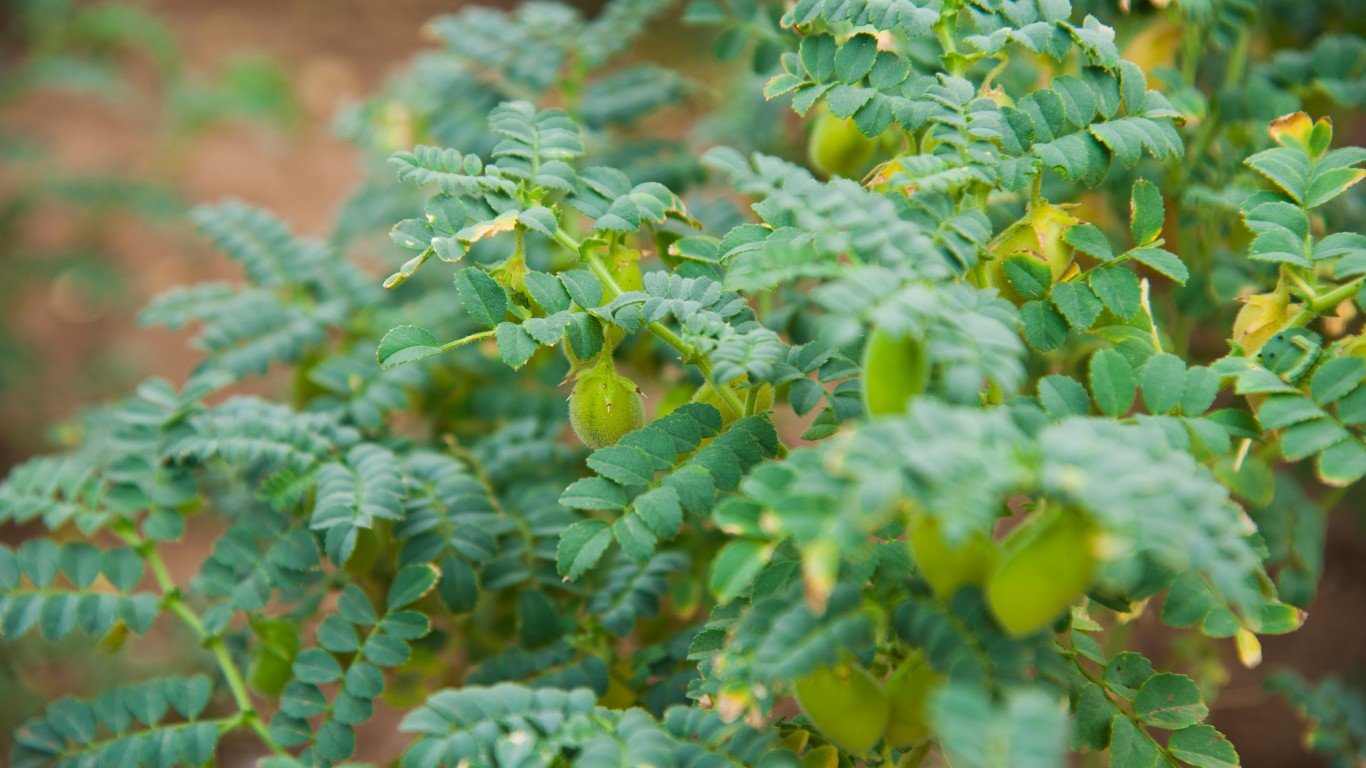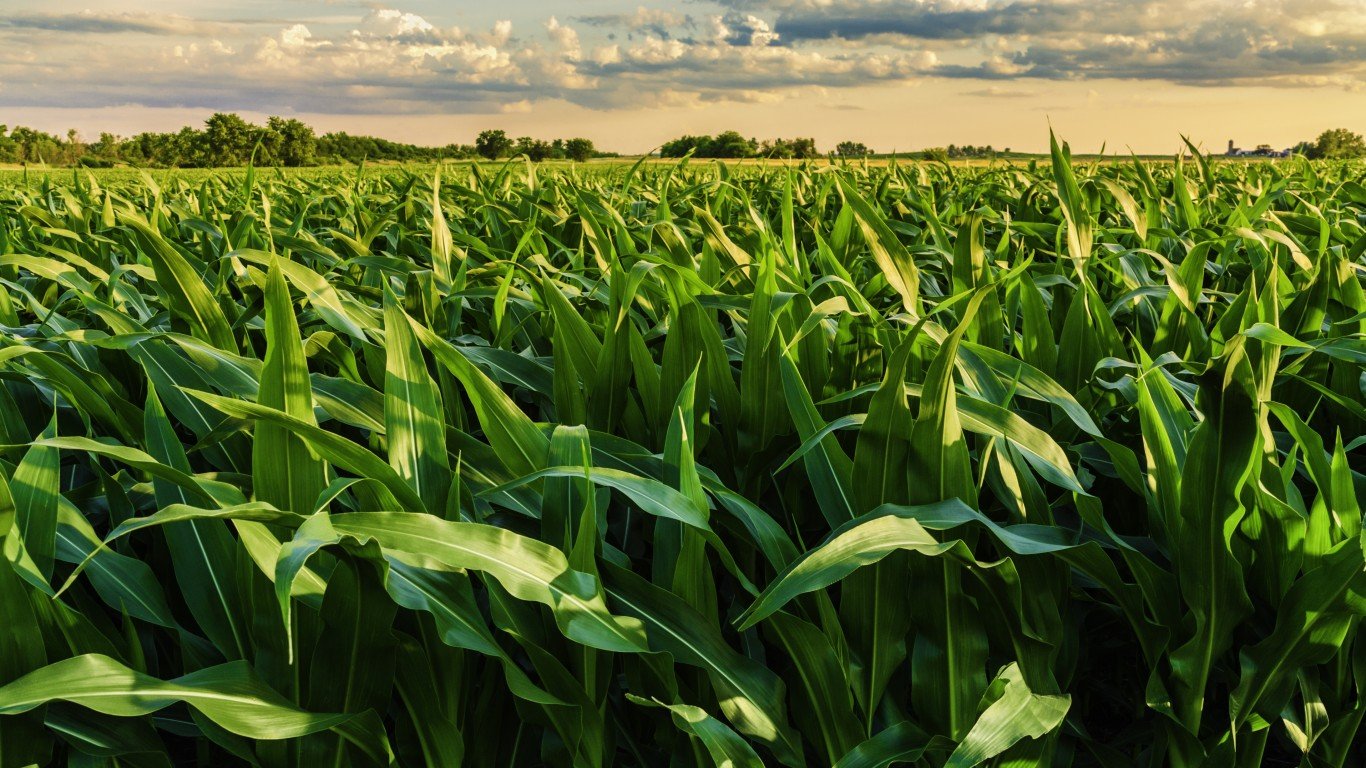
20. Beet Sugar
> GHG emissions in kg of CO2 equivalents per kg of food: 1.8
> GHG emissions in kg of CO2 equivalents per nutritional unit: 1.8 per 1 kg (20 highest)
> Land use in sq meters per kg of food: 1.8 (7th lowest)
> Freshwater withdrawal in liters per kg of food: 217.7 (18 lowest)
Beet sugar and sugar from sugarcane sweetens many food products. Although both are identical chemically as sucrose, beet sugar and sugarcane sugar go through different refining processes. To obtain the sucrose, the beets are thinly sliced and juiced. Sugarcane sugar is processed with bone char, which is removed from the final product – an important distinction for vegans.

19. Wine
> GHG emissions in kg of CO2 equivalents per kg of food: 1.8
> GHG emissions in kg of CO2 equivalents per nutritional unit: 0.1 per 1 unit (10 ml alcohol) (1 lowest)
> Land use in sq meters per kg of food: 1.8 (10th lowest)
> Freshwater withdrawal in liters per kg of food: 78.9 (9 lowest)
To make a great wine, all you need to do is pick the grapes, let them ferment, and bottle the final product. Easy right? Well, knowing when to harvest the grapes, aging the vintage for a great taste, and bottling the wine in the right container all take the knowledge and skill of an experienced winemaker. Today, winemakers have to contend with not only the delicate art of making a wine, but with climate change that is causing droughts and wildfires and changing which grape varieties can be grown where.

18. Other Pulses
> GHG emissions in kg of CO2 equivalents per kg of food: 1.8
> GHG emissions in kg of CO2 equivalents per nutritional unit: 0.8 per 100 g protein (15 lowest)
> Land use in sq meters per kg of food: 15.6 (10th highest)
> Freshwater withdrawal in liters per kg of food: 435.7 (20 highest)
You’ve probably never heard of the term “other pulses” but you no doubt seen some of them in the grocery store. Edible seeds in the legume family, pulses include dry beans, dry peas, and chickpeas, among others. Because growing pulses requires less water than most other crops and decreases greenhouse gasses, pulses are considered a sustainable agricultural crop.

17. Maize (Meal)
> GHG emissions in kg of CO2 equivalents per kg of food: 1.7
> GHG emissions in kg of CO2 equivalents per nutritional unit: 0.4 per 1000 kcal (4 lowest)
> Land use in sq meters per kg of food: 2.9 (12th lowest)
> Freshwater withdrawal in liters per kg of food: 215.7 (17 lowest)
Maize meal is a ground-up version of dried corn kernels, also known as cornmeal, and can be found in a variety of food products. Maize meal is widely used in Southern Africa because it can be stored without refrigeration.
16. Wheat & Rye (Bread)
> GHG emissions in kg of CO2 equivalents per kg of food: 1.6
> GHG emissions in kg of CO2 equivalents per nutritional unit: 0.6 per 1000 kcal (13 lowest)
> Land use in sq meters per kg of food: 3.9 (21st highest)
> Freshwater withdrawal in liters per kg of food: 647.5 (14 highest)
Wheat and rye are both cereal grains, but are put to different uses. Wheat is processed into flour for baking. Also used in baking, rye is a staple of animal feed and in whiskey distilling. Their tastes are different, too. Wheat has a neutral flavor, while rye has a sour taste.







